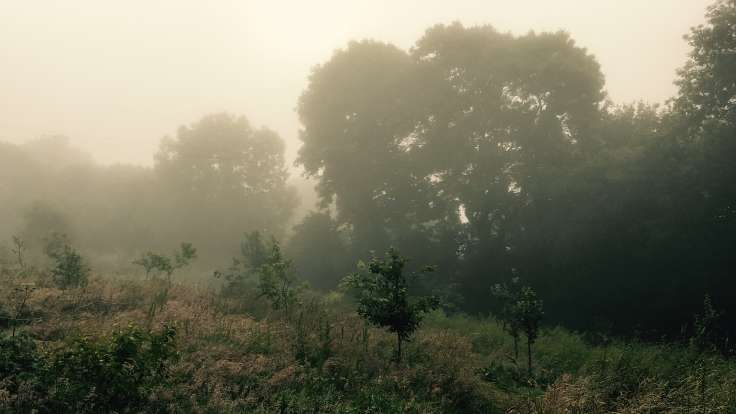
The multi-layered nature of a Forest Garden just about visible through the mist
A self-nourishing wildlife orchard underplanted with edible shrubs and perennial vegetables. Productive, sustainable and low-maintenance 💚 🌳
A forest garden mimics the edge of woodland and works with nature to grow produce sustainably for less work.
Principles
The defining principles of a forest garden.
- Shelter from elements
- Layers of planting
- Permanent living ground cover
- Provides own nutrients & pest control
Guidelines
Things to continuously consider when creating a forest garden.
- Protection: windbreak, nurse tree, dead-hedge
- Spacing
- Ground cover
Features
The defining features of a forest garden.
Using trees, shrubs, perennials and self-seeding annuals, a forest garden emulates a young natural woodland. The features of a forest garden can apply to any sized garden:
- Productive
- Sustainable
- Low maintenance
1. Productive
- A forest garden is a productive garden, growing food, wood and other crops.
- It is multi-layered, using all available space in 4 dimensions.
2. Sustainable
- Supplies its own nutrients with mineral accumulators and nitrogen fixing plants.
- As a balanced ecosystem, the wildlife predators keep the pests in check.
- A permanent “living mulch” ground cover minimises weeds.
- Trees, perennials and soil biota sequester carbon.
- Increased biodiversity because of the wide range of plant species, the habitats these provide for wildlife and the flowers chosen for pollinators & predators.
3. Low maintenance
- Resilient (can withstand greater climate fluctuations).
- No watering (all water on-site)
- Minimal weeding (permanent living ground cover)
- No digging (mostly perennials with some self-seeding annuals)
- No fertilisers (fertility from mineral accumulators and nitrogen fixers)
- No compost (compost in-situ)
The book I recommend is Martin Crawford’s Creating a Forest Garden.